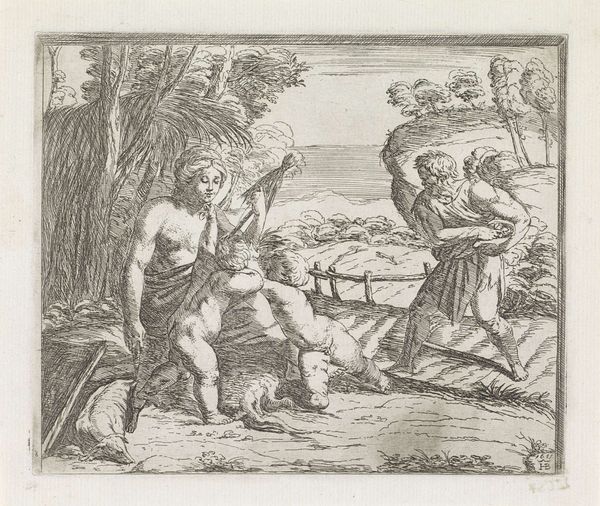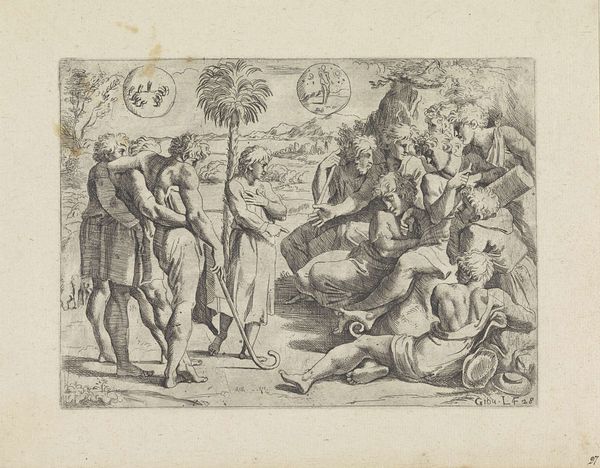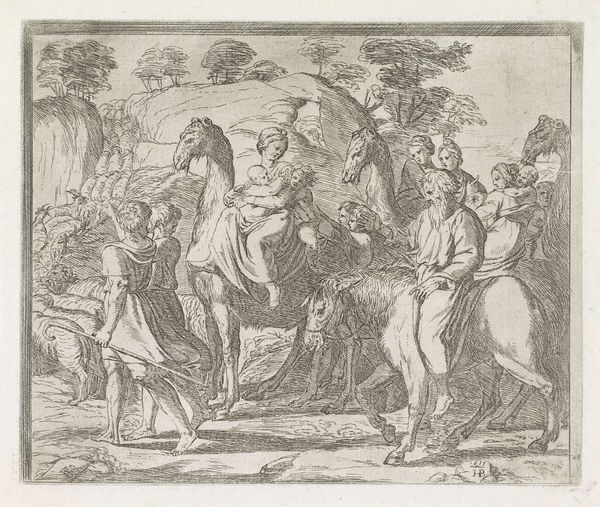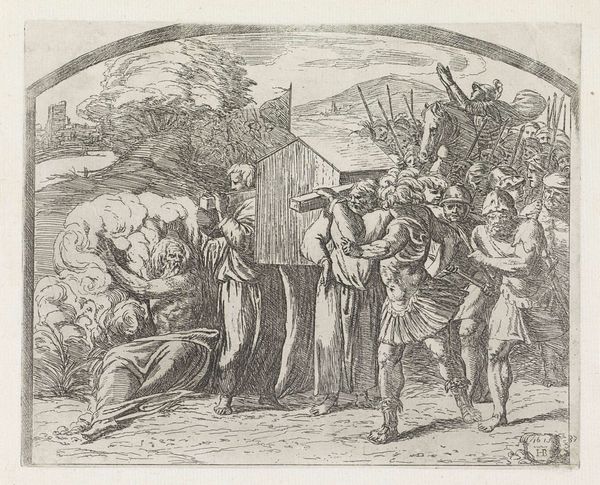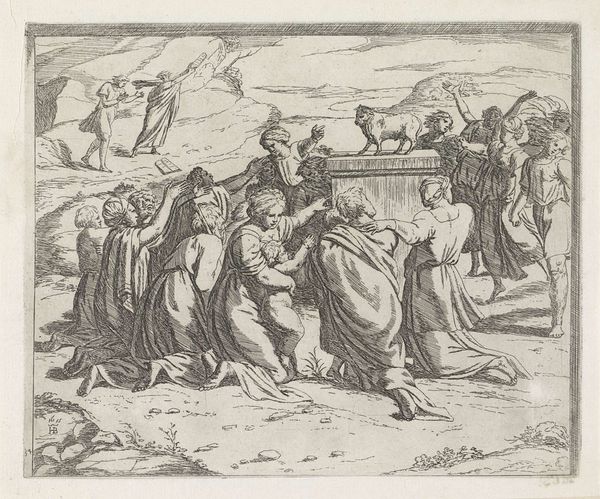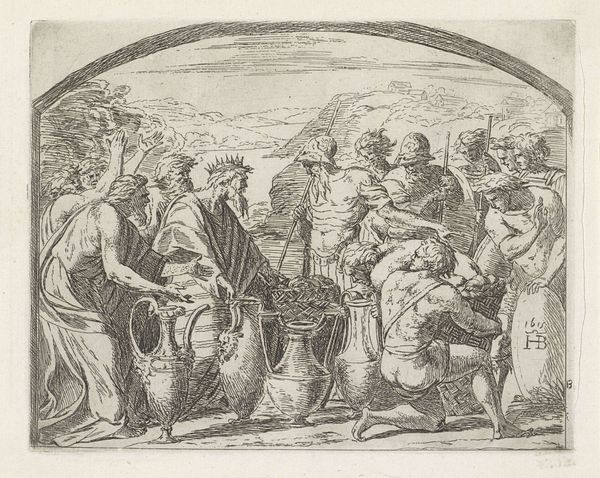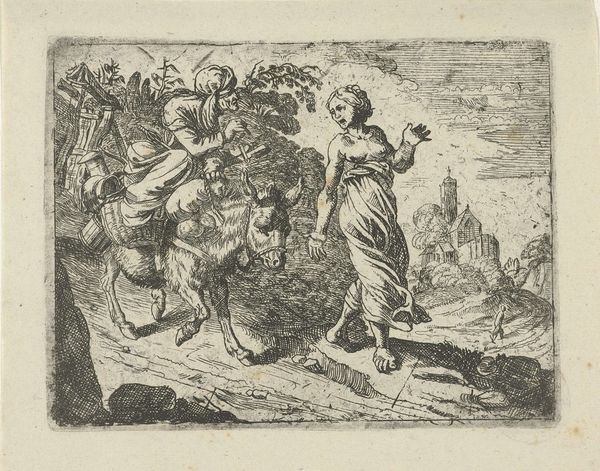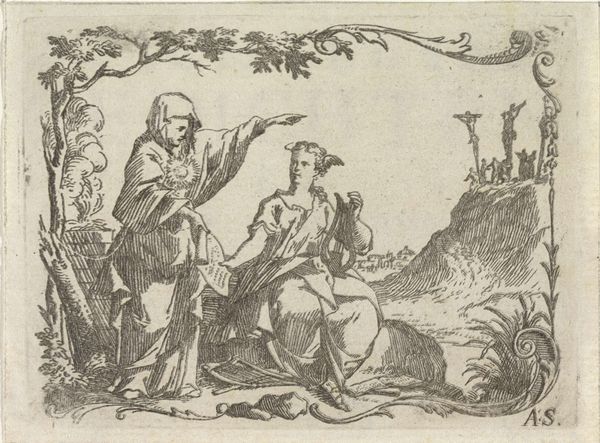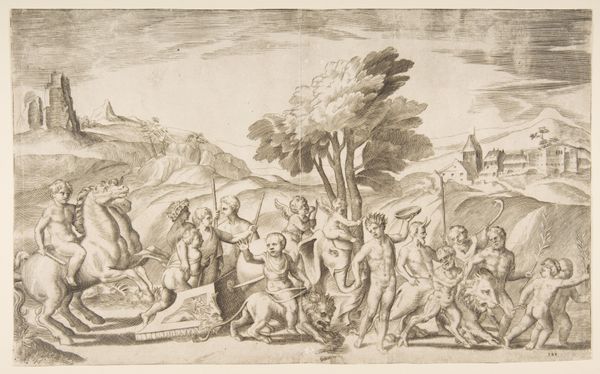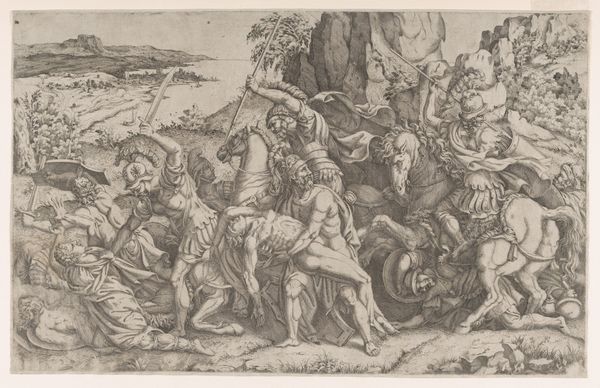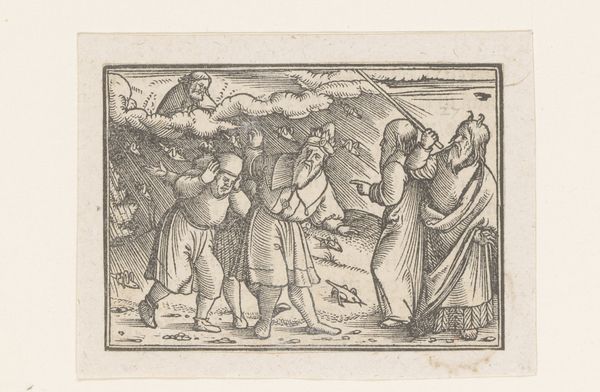
print, etching, engraving
#
ink drawing
#
narrative-art
#
baroque
# print
#
pen illustration
#
pen sketch
#
etching
#
figuration
#
history-painting
#
engraving
Dimensions: height 150 mm, width 193 mm
Copyright: Rijks Museum: Open Domain
Curator: This engraving, crafted around 1615, presents Orazio Borgianni's take on a well-known biblical narrative, titled "Jozef vertelt zijn dromen aan zijn broers," currently residing here at the Rijksmuseum. Editor: The mood strikes me as immediately tense, almost conspiratorial. Look at how huddled and wary those figures seem! And the way Borgianni uses the etching lines feels deliberately scratchy, adding to that unsettling feel. Curator: That palpable tension is indeed key. The clustering of Joseph’s brothers to the left creates a solid, almost impenetrable mass, a direct visual contrast to Joseph himself, who stands isolated, his stance suggesting vulnerability. The use of chiaroscuro only heightens that division, highlighting the power dynamics at play within the narrative. Editor: I wonder how the placement of these figures impacts how audiences perceived authority back then. Note that these postures, combined with the relative youth of Joseph, underscore not only the personal drama, but also touch on larger themes of innocence against corrupt power. Are we meant to sympathise with the group dynamic of the brothers, perhaps even see a nascent form of resistance to centralised power, in how Borgianni represents this tense familial interaction? Curator: Interesting. While your point about the thematic elements resonating with notions of resisting power is astute, one could argue that Borgianni directs our gaze via formal choices, encouraging our identification with Joseph. The barrenness around Joseph—achieved by minimal line work in that part of the composition—forces focus. Editor: Perhaps. Yet, the artistic interpretation should never divorce itself completely from its era. The Baroque period was a tumultuous time politically and religiously. Even this biblical story can serve as commentary, indirectly referencing social anxieties within 17th century societies and highlighting tensions between rulers and the ruled. It seems vital to consider its contextual environment, rather than just seeing a straightforward rendition of a well-known fable. Curator: Undoubtedly, considering these socio-political currents gives this piece another layer of meaning. I appreciate how reflecting on your reading enriches one's perspective beyond simple aesthetics, making the art's effect profoundly felt. Editor: And understanding that rigorous formal analysis reveals so many complexities makes appreciating the art a deeply enriching exercise, reminding me that there is no one approach for enjoying a given art object!
Comments
No comments
Be the first to comment and join the conversation on the ultimate creative platform.
